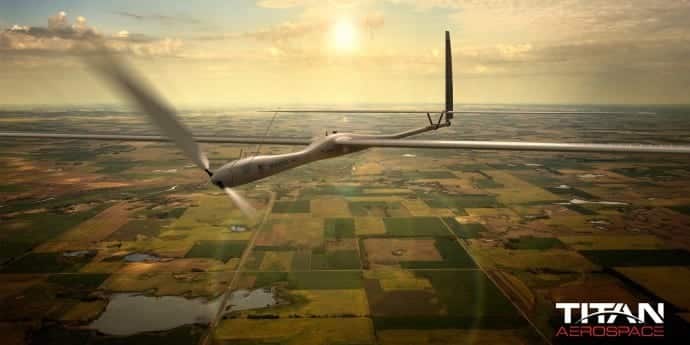Google’s solar-powered 5G drone crashes while testing
Even as we reported that Google is testing out solar-powered drones to bring 5G internet which is 40 times faster than the current 4G technology, one of the drones has crashed during the test flight.
Titan Solara 50, one of Google’s 5G drones had crashed during a test flight in New Mexico in May 2015 last year. The drone was solar powered and didn’t last long in the air after it encountered an updraft and one of its wings failed before crashing in the company’s Albuquerque test field. This drone was part of Google’s larger effort to deliver Internet from the stratosphere.
It has been more than half a year since the May 2015 incident, and U.S. accident investigators have concluded the cause of the crash: a wing failure. According to a report by the National Transportation Safety Board, on May 1, 2015, the Solara 50 had just lifted off from a remote, desert landing strip in New Mexico when it started experiencing control problems. While the remote operator attempted to stabilize the plane, a “thermal updraft” sent it upward at a faster speed, according to the NTSB.
The wind ended up pushing the drone at a speed it wasn’t designed for, and the left wing experienced a failure as a result. “The aircraft began an uncontrollable and erratic flight path roughly straight ahead in a rapid descent,” the NTSB wrote in a brief summary posted on its website. “The left outboard wing section separated from the aircraft during the first portion of the descent and the right outboard wing section separated later in the descent.”
After about four minutes of flight, the aircraft struck the ground and was destroyed at 11:07 a.m. local time. Luckily, the test flight crashed in an unpopulated desert area and no one was injured. Google didn’t immediately respond to a request for comment on the report.
The drone was built by Titan Aerospace, a company headed by former Microsoft Corp. executive Vern Raburn that Google bought last year. According to company promotional material, it has a wingspan of 164 feet (50 meters) and is expected to fly above the weather for long stretches, where it can then beam Internet signals to earth as if it was a satellite.
The drone crash was a setback for Google and everyone involved with the project, one of several (including an effort from Facebook) aiming to use solar-powered planes to provide Internet to distant areas.
The search giant is in a race with Facebook Inc., which also attempted to buy Titan, to build new Internet services around the world. Instead, Facebook purchased U.K.-based Ascenta, which is developing its own high-altitude drones, for $20 million.

